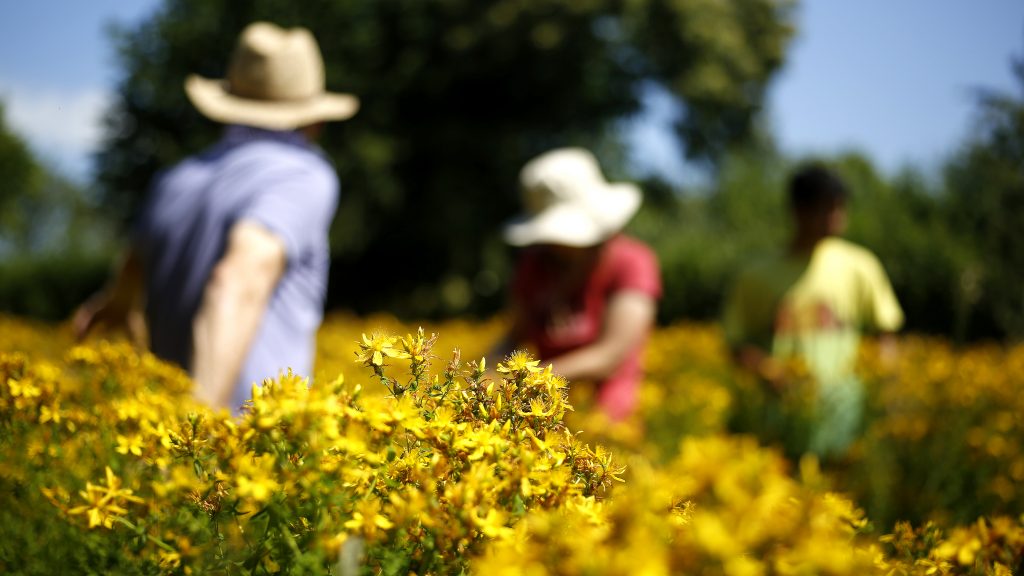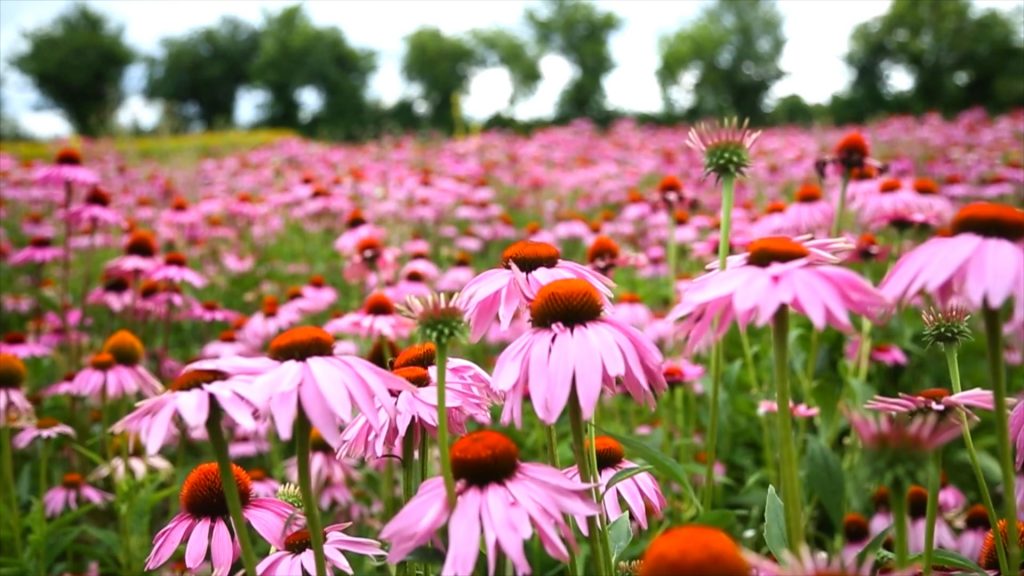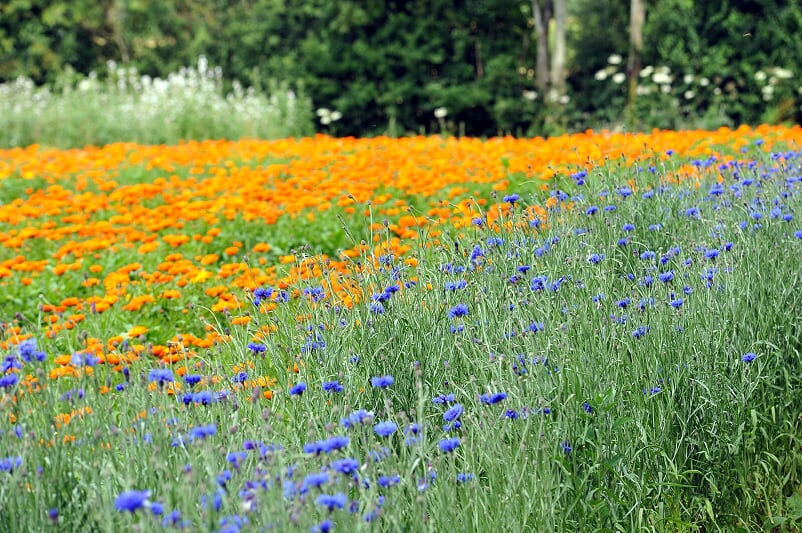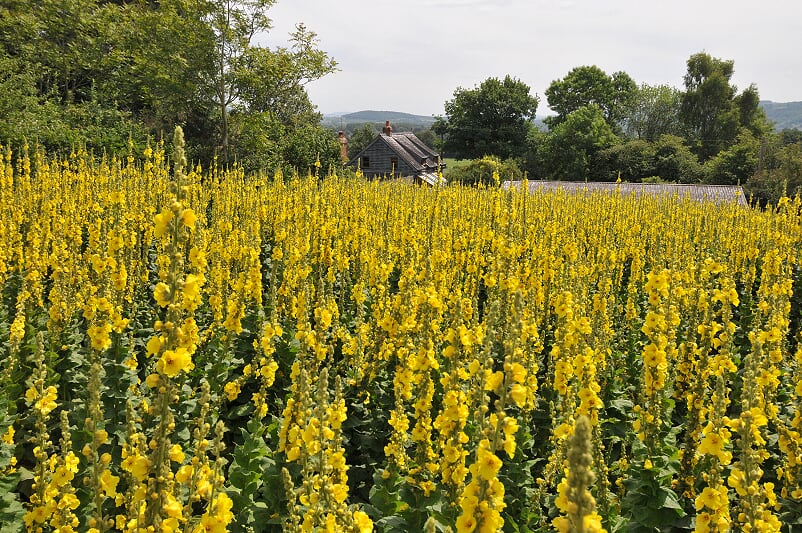Herbfarmacy, Herefordshire; a labour of love
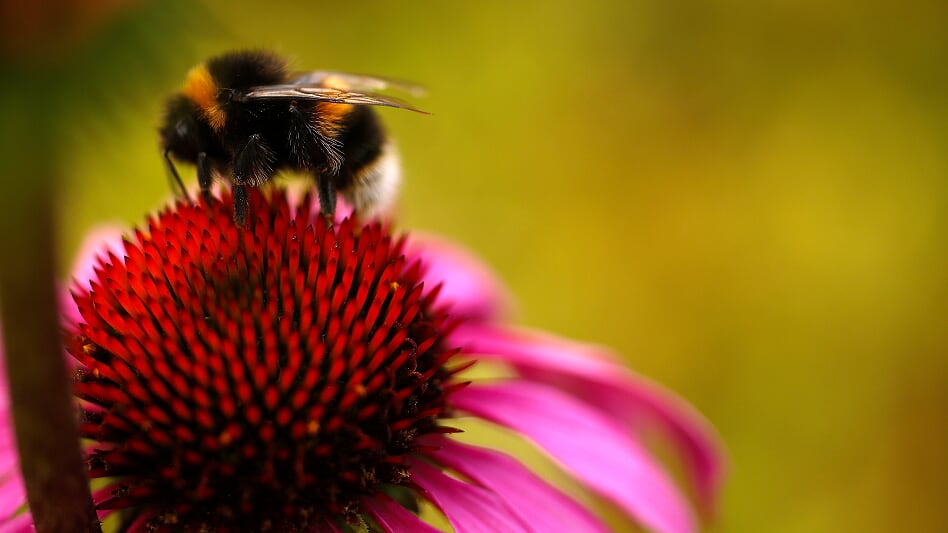
Paul Richards established a small organic herb farm on a few acres of land in northwest Herefordshire nearly 40 years ago and is one of the longest standing holders of the Soil Association organic symbol. For many years, Paul has opened the farm to visitors for them to see and enjoy the spectacular plants grown, most of which are used in our range of skincare products. Sadly, this year it’s not possible but we hope you enjoy reading about what Paul and his team do and seeing these images of the wonderful herbs they grow.
A closer look
- Hypericum
- Echinacea
- Cornflower, Calendula and Marshmallow
- The tall spires of Mullein
In early spring, herbs are sown by hand using seeds collected from the previous year’s crop. During May, rows of new green shoots can be seen, surrounded by rich red soil overlooking the Wye Valley. All the herbs are tended by hand, including hoeing out weeds between each one; it really is a labour of love! These tiny herb-shoots flower in June and July to produce a wonderful canvas of colours that many visitors return to enjoy each year. The fields are full of butterflies, bees and other small creatures. Everyone loves seeing the farm a sea of orange, purple, blue and yellow.
Paul tells us about each type of herb and why he loves growing them.
Marshmallow – Winter
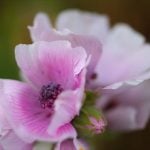 Our signature herb is Marshmallow (Althaea officinalis) which is not very popular with gardeners as it is less showy than other members of the mallow family. It is tall growing with soft hairy leaves and inconspicuous but very beautiful lilac flowers when you look at them closely. It has purple pollen and bees collect this enthusiastically giving them a purple look when the leave to return to the hive. The roots contain delicate mucilages you can feel if you cut open the fresh root that are very useful for delicate skin areas and we use it in all our facial products as well as most of the rest of the range. We lift the long fingers of root in wintertime when the active ingredients are most concentrated.
Our signature herb is Marshmallow (Althaea officinalis) which is not very popular with gardeners as it is less showy than other members of the mallow family. It is tall growing with soft hairy leaves and inconspicuous but very beautiful lilac flowers when you look at them closely. It has purple pollen and bees collect this enthusiastically giving them a purple look when the leave to return to the hive. The roots contain delicate mucilages you can feel if you cut open the fresh root that are very useful for delicate skin areas and we use it in all our facial products as well as most of the rest of the range. We lift the long fingers of root in wintertime when the active ingredients are most concentrated.
Comfrey – May
 The year’s summer harvest starts in May when we cut the leaves of our Comfrey patch for drying. We grow the hybrid Bocking 14 which many gardeners use for making liquid fertiliser for tomatoes (especially) and for mulching and composting. This variety is also high in allantoin and low in alkaloids, making it good for use as a tea, as most of the alkaloids are actually thrown out with the tea leaves. In skincare, it is used mainly for its mucilages which have a soft silky feel and are very good for moisturising skin that faces extra challenges – especially dry or cracked hands and feet, where its known healing properties are also very useful. We also harvest Comfrey root in wintertime and this together with the leaf is infused in oil for use in oils and balms.
The year’s summer harvest starts in May when we cut the leaves of our Comfrey patch for drying. We grow the hybrid Bocking 14 which many gardeners use for making liquid fertiliser for tomatoes (especially) and for mulching and composting. This variety is also high in allantoin and low in alkaloids, making it good for use as a tea, as most of the alkaloids are actually thrown out with the tea leaves. In skincare, it is used mainly for its mucilages which have a soft silky feel and are very good for moisturising skin that faces extra challenges – especially dry or cracked hands and feet, where its known healing properties are also very useful. We also harvest Comfrey root in wintertime and this together with the leaf is infused in oil for use in oils and balms.
Hypericum – June (late – St John’s Day is 24th June)
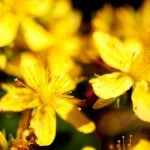 Hypericum or St John’s Wort (H. perforatum) is so named as it flowers around St John’s day (24th June). Interestingly, it never used to flower here until July – but over the last 10 years or so it is in flower by then almost every year. This is one of several effects of Global Warming that we have noticed in nearly 40 years of growing herbs here in Herefordshire. We use the young flowers which are infused fresh in oil and kept in the sunlight when they slowly turn the oil blood red and this oil is great for muscular pain as it is mildly analgesic. The red oil is only produced with fresh flowers and it always intrigues me how this was discovered way back when. Hypericum is also used for depression and because of this as well as it’s sunny yellow colour and time of flowering, it is often referred to as the Sunshine Herb.
Hypericum or St John’s Wort (H. perforatum) is so named as it flowers around St John’s day (24th June). Interestingly, it never used to flower here until July – but over the last 10 years or so it is in flower by then almost every year. This is one of several effects of Global Warming that we have noticed in nearly 40 years of growing herbs here in Herefordshire. We use the young flowers which are infused fresh in oil and kept in the sunlight when they slowly turn the oil blood red and this oil is great for muscular pain as it is mildly analgesic. The red oil is only produced with fresh flowers and it always intrigues me how this was discovered way back when. Hypericum is also used for depression and because of this as well as it’s sunny yellow colour and time of flowering, it is often referred to as the Sunshine Herb.
Mullein – June-October
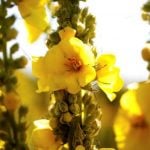 Mullein, or Verbascum, has many forms well know to gardeners. We grow the giant V. densiflora (syn V. thapsiforme) which can grow to 13ft and is very impressive en masse. It is the species widely grown and researched in Europe. Herbalists use it infused in oil as an ear oil and it also has a reputation in skincare for smoothing fine lines by improving skin elasticity. More recent research has shown it to be effective for cold sores, it features in our Lip Nurse balm.
Mullein, or Verbascum, has many forms well know to gardeners. We grow the giant V. densiflora (syn V. thapsiforme) which can grow to 13ft and is very impressive en masse. It is the species widely grown and researched in Europe. Herbalists use it infused in oil as an ear oil and it also has a reputation in skincare for smoothing fine lines by improving skin elasticity. More recent research has shown it to be effective for cold sores, it features in our Lip Nurse balm.
Meadowsweet – June
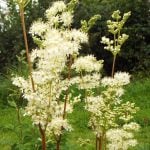 Meadowsweet is a common wildflower of roadsides and damp meadows, its frothy creamy white flowers appearing in June. It contains salicylic acid, and the Latin name Spiraea ulmaria gives the …spir… in Aspirin. The beauty of meadowsweet is that is also contains mucilages which soften the effect of the salicylic acid on the stomach lining. The analgesic effect is useful topically for muscle pain and is used in our Muscle Recovery Balm.
Meadowsweet is a common wildflower of roadsides and damp meadows, its frothy creamy white flowers appearing in June. It contains salicylic acid, and the Latin name Spiraea ulmaria gives the …spir… in Aspirin. The beauty of meadowsweet is that is also contains mucilages which soften the effect of the salicylic acid on the stomach lining. The analgesic effect is useful topically for muscle pain and is used in our Muscle Recovery Balm.
Californian Poppy – July
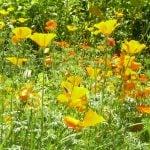 Californian Poppy is well known to gardeners for its bright orange flowers and there are also variants in several colours. We grow the orange variety native to California, and the herb is harvested fresh in July and made into a tincture that is mild enough to be used in children for sleeplessness and nervous bedwetting.
Californian Poppy is well known to gardeners for its bright orange flowers and there are also variants in several colours. We grow the orange variety native to California, and the herb is harvested fresh in July and made into a tincture that is mild enough to be used in children for sleeplessness and nervous bedwetting.
Calendula – July-October
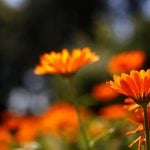 Another bright orange flower we harvest over the summer from July onwards until we have enough to last us to next year’s harvest. We grow a tall double variety which is better for picking as we hand pick the flowerheads, and the less bending we have to do the better! Calendula is a great anti-inflammatory and healing herb that we use widely in our skincare products.
Another bright orange flower we harvest over the summer from July onwards until we have enough to last us to next year’s harvest. We grow a tall double variety which is better for picking as we hand pick the flowerheads, and the less bending we have to do the better! Calendula is a great anti-inflammatory and healing herb that we use widely in our skincare products.
Echinacea – July-August
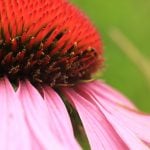 We grow E. purpurea which is native to prairies and woodland edges in central and south-eastern USA and often known as hedgehog plant because of the central spiky cone of the flowerhead. It grows well in most soils in the UK and has increased in popularity as an ornamental perennial. Much work has been done, especially in Europe, on the medicinal benefits of this species. It is used to stimulate the immune system and is especially useful for viral illnesses – particularly colds and flu. We harvest the whole plant in late July/early August for making tincture and also for a herb water that gives mild astringency to our toner.
We grow E. purpurea which is native to prairies and woodland edges in central and south-eastern USA and often known as hedgehog plant because of the central spiky cone of the flowerhead. It grows well in most soils in the UK and has increased in popularity as an ornamental perennial. Much work has been done, especially in Europe, on the medicinal benefits of this species. It is used to stimulate the immune system and is especially useful for viral illnesses – particularly colds and flu. We harvest the whole plant in late July/early August for making tincture and also for a herb water that gives mild astringency to our toner.
Cornflower – July-October
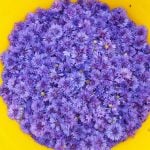 Cornflower has to be one of my favourites with its vibrant blue flowers. I like to grow it alongside the Calendula as the two colours look so beautiful together. The flowers are used in France as a soothing anti-inflammatory herb for the eyes and eye area and they are a good sustainable substitute for Eyebright that is in danger of being over-harvested in the wild because it cannot be cultivated. We use it in our Just Eye Cream.
Cornflower has to be one of my favourites with its vibrant blue flowers. I like to grow it alongside the Calendula as the two colours look so beautiful together. The flowers are used in France as a soothing anti-inflammatory herb for the eyes and eye area and they are a good sustainable substitute for Eyebright that is in danger of being over-harvested in the wild because it cannot be cultivated. We use it in our Just Eye Cream.
Elecampane – Autumn/Winter
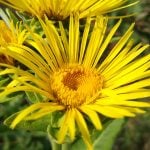 This impressive tall plant (Inula helenium) has large daisy-like yellow flowers in mid-late summer, and we dig the roots in autumn or winter for a tincture. This is used as a gentle expectorant that also has mucilages that sooth the internal membranes when coughing. It is used in cough mixtures, and the tincture is good to take when a cold goes on the chest.
This impressive tall plant (Inula helenium) has large daisy-like yellow flowers in mid-late summer, and we dig the roots in autumn or winter for a tincture. This is used as a gentle expectorant that also has mucilages that sooth the internal membranes when coughing. It is used in cough mixtures, and the tincture is good to take when a cold goes on the chest.
Herbfarmacy hope to invite you to come and visit the Open Farm next Summer. Until then you can find out what they do and look at the products made at the Herbfarmacy website
- View of the Black Mountains from the Herbfarmacy herb farm
If you enjoyed this content please consider making a donation to help us continue to support our nursing and health beneficiaries.





